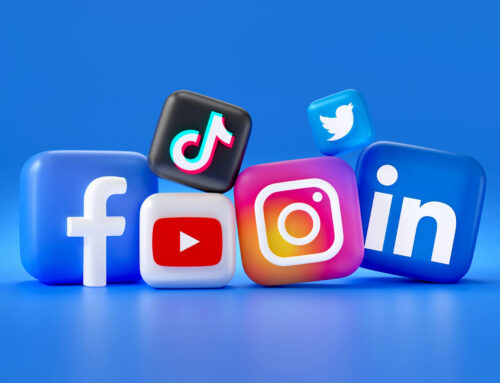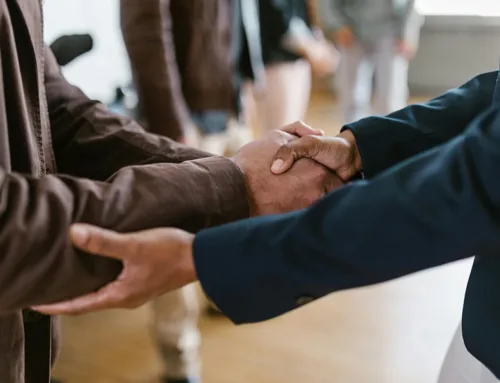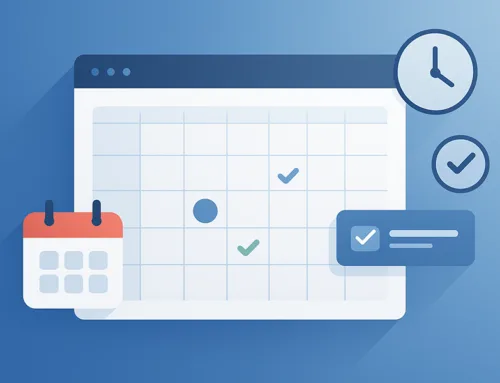The Attention Span of Your Readers is Dropping
Did you know that 80% of your online readers only skim through your website content? Moreover, their attention span has dropped from 12 seconds to only 8 seconds. In other words, you have 8 seconds to engage website visitors or they will leave your site and never come back.
Precisely because of that, many digital marketers have started investing in interactive visual content. Visual content engages visitors, increases their dwell time, and boosts brand awareness and memorability. Above all, it is more appealing and highly shareable.
Another great benefit of visual content is that it can help you enhance your backlink portfolio. In this article, you will learn what visual content forms generate backlinks and how to maximise their effectiveness.
Infographics
Infographics are one of the most popular content formats for a simple reason. They let you present complex data and statistics in a more digestible and engaging way. Given that, it is not surprising at all that infographics are liked, shared, and retweeted 3 times more than any other form of content.
When designed and promoted properly, infographics can become a valuable source of information and, as such, boost traffic, shares, and backlinks from reputable websites in your industry. Let’s take the example Domain.me that hires Infostarters to write and design infographics for their blog. For instance, their infographic about vlogging has generated 4.850 website visits, 652 infographic shares, and 136 backlinks.

However, achieving such impressive results by publishing an infographic is not easy. You will need to:
- Audit your audiences and adapt your writing style and tone of voice to them.
- Choose the right infographic type. For example, you could use a timeline infographic to explain how different concepts have changed over time, while statistical infographics will help you visualise research results
- Make sure your design elements and text are in balance. Shorten sentences and focus on the most critical tips and information only. Customise illustrations and ensure they are relevant to the topic. Above all, build a logical information hierarchy – the most important data should have a prominent position.
- Keep it on-brand. Use your brand’s tone of voice, colours, and typography. Also, always add a logo to the bottom of your infographic to boost brand awareness and maximise trustworthiness. That is what big brands like Content Marketing Institute or Domain.me do.
Memes
Bad Luck Brian, Trollface, Old Spice Man, Success Kid. Memes are not going anywhere. They can boost your link building strategy in multiple ways. First, memes are inexpensive. Second, they are a source of entertainment for social media users. As such, they have great potential to go viral and earn lots of relevant backlinks. People love to share memes, especially those that address trending cultural phenomena. Once other users start talking about your memes and using them, this means more backlinks for you.
Now, many tools can help you create memes, including Photoshop, Meme Generator or Quick Meme. To create a meme that will go viral, here are a few things to know:
- Before you bring your meme design to life, make sure it doesn’t insult anyone.
- Address trending events from a fresh viewpoint.
- Create memes relevant to your audiences.
- Keep them on-brand – make sure they reflect your brand’s values and tone of voice.
- Promote them on relevant platforms like 9gag and social networks.
- Use them on your blog or off-site articles to increase their exposure.
Video Content

No matter if you want to tell your brand’s story or explain how your product works, there is no better way to do so than using video content. Videos allow you to send the right message to your users in the right way. They are more engaging, interactive, and exciting than traditional textual content. Precisely because of that, they let you present even the most complex data in an easy-to-digest way.
Above all, videos let you humanise your brand. You could use them to create short animated videos that evoke emotions, present customer testimonials in a more engaging way, or even share behind-the-scenes glimpses of your staff and offices to relate to your customers on a more personal level.
When promoted properly, videos will become your major backlink boosters. Include them on your landing pages, email marketing campaigns, paid ads and, of course, promote them strategically on social networks.
High-Quality Images
Images have always been one of the most important elements of your online presence. They help you send your message in a more engaging and direct way. When used on social networks, images will engage audiences and gain lots of shares and backlinks. On your website, they will keep your textual content more appealing and easier to follow and memorise. No matter if it is user-generated photos, product photos, or inspirational quotes, you should always invest in high-quality photography and use the same colour palettes, layouts, fonts, and filters to keep them on-brand and recognisable.
Slide Share Presentations
Slides and presentations are one of the simplest and most effective ways to educate your target audiences. They let you break down complex information into smaller chunks of text that are easier to understand and remember. Similar to infographics or charts, they also depend on your colours, layouts, typography, and so forth. Only by choosing the right design elements will you be able to convey the message properly. Also, simplify and shorten your text – you don’t want to create overcluttered slides that are difficult to follow.
Statistical Charts and Graphs
Also known as data visualisations, graphs and charts are one of the most effective ways to earn backlinks. For example, when writing a comprehensive article, an ultimate guide, or a research study, you could create graphs, charts, and maps to visualise your most significant data. If you look at reputable sites like Statista, Backlinko, Ahrefs, or Moz, you will notice that they earn loads of awesome only by creating original data visualisations for their blog.
Promote your data visualisations your blog, social channels, Q&A sites, and guest articles strategically to maximise their exposure and start earning relevant backlinks from reputable sites in your industry. Also, make sure your data visualisations are on-brand and easily recognisable by using the same design. Also, insert your logo so you can ask for backlinks easier.
How to Build Links Using Visual Content?
In the examples above, you have learned that, sometimes, creating an amazing piece of content is enough to boost traffic and earn a plethora of credible backlinks. However, here are a few additional link building tactics you may implement:
1. Guest Blogging
Guest blogging can help you promote your visual content in multiple ways. First, you could write an article and embed your infographic, charts, graphs, videos, etc. and link back to their original source. Second, you can link back to your infographics or video content as an additional source of information. Always make sure your links are added naturally and that they are relevant to your target audiences.
When writing guest articles, there are a few rules to follow. First, focus on blogs in your industry that target the same audiences. Second, make sure the site is SEO-friendly – pay attention to its rankings, domain authority, backlinks, traffic, keywords, and so forth. You can simplify this prospecting phase by investing in automated link building tools. Finally, choose topics that are relevant to their audiences and write high-quality content that will encourage people to click on your link to visit your site and learn more about you.
2. Broken Link Building
Broken link building is one of the oldest and yet most effective link building tactics. Namely, every reputable site strives to eliminate broken links, since they can hurt both their SEO efforts and user experiences.
Your goal is to find popular and authoritative sites that link back to the content similar to yours. Then, analyse their links and find broken ones. That is where tools like Check My Links or Ahrefs’ Broken Link Checker can help. Focus on those links, topics, and anchors that are related to your blog topics. For example, if a blogger linked back to a popular infographic, but the link doesn’t work anymore, you could inform them about the faulty link and ask them to replace it with your infographic on the same topic.
3. Google Reverse Images
Like I have already mentioned, people will keep sharing your visual content on social and embedding them into their blog posts. Now, your goal is to identify those people that are using your visual content without linking back to you and reclaim links.
No matter if you are creating charts, infographics, or high-quality images, this is where Google’s Reverse Image Search can help. Namely, you should copy your blog’s URL and this nifty tool will tell you where else your visuals appear. Check each of these sites and see whether they are giving credits to you. Make a list of those that don’t provide a backlink and reach out to them and ask them to link back to the original post from your blog. This is one of the easiest ways to build links and, at the same time, build relationships with relevant industry bloggers.
4. Content Syndication Platforms
Apart from building links on relevant blogs in your industry, you should also take advantage of content syndication. Simply put, content syndication is the process of reposting the same content piece across different websites, along with a link to your original content piece. This practice will maximise your reach, drive more relevant traffic to your website and, above all, help you generate a quality backlink.
Now, there are many platforms where you can syndicate your content and some of them are:
- Medium
- Quora
- SlideShare
- Business2Community
- Tumblr
Some submission sites are dedicated to a specific type of content. For example, on Vimeo or YouTube, you can syndicate your video content. As per infographics, you can syndicate them on platforms like dailyinfographic.com, iinfographic.com, visual.ly, etc.
5. Repurpose Images
This is one of the simplest link building tactics to use. Namely, you can find your most beautiful and top-performing visuals, be they infographics, animations, or product photos, and merge them into a comprehensive article. For example, you could publish the “Our Top images from 2019” article, where you would insert backlinks to your original photos. You could also use repurpose your images by using them in your case studies, guides, whitepapers, online brochures, and so forth. Curated content is usually highly engaging and, when promoted well, it can help you earn loads of shares and backlinks.
Sure, to ensure more backlinks, you could always combine internal links with links to other relevant information sources in your industry. So, when your blog post is live, you can reach out to the blogger whose content you mentioned and linked back to and ask them to share the article with their audiences and promote it on their blog.
6. On-Site SEO
When creating amazing visual content, you want to maximise its exposure in the SERPs and boost ranking. This is exactly where you need to optimise it for search engines.
For starters, optimise for the right keywords. Remember that your audiences consume visual content from both desktop and mobile devices. Many of them now use voice search. As they can now perform searches without looking at their screens or typing, they use more natural and conversational phrases, usually long-tail keywords and interrogative sentences.
Resize your visual content. There are many tools, such as TinyJPG, which will help you reduce the size of your image files without compromising their quality.
Optimise your image files and alt tags – keep them informative and insert keywords organically.
Write informative meta descriptions and title tags to boost clicks.
Keep your content responsive – your images and videos should look great on both desktop and mobile devices.
Conclusions
Visual content will increase your website traffic, maximise engagement, and boost your performance in the SERPs. Using a good backlink checker tool will also help you to find great opportunities to build high authority, relevant links. Most importantly, it will help you improve your backlink portfolio. Sure, to make the most out of your visual content, you need to invest in high-quality design and content writing, as well as optimise it for search engines. And, I hope these tips will serve as your solid starting point!
Author Bio
Jacob Wilson is a business consultant, and an organisational psychologist, based in Brisbane. Passionate about marketing, social networks, and business in general. In his spare time, he writes a lot about new business strategies and digital marketing for Bizzmark blog.





